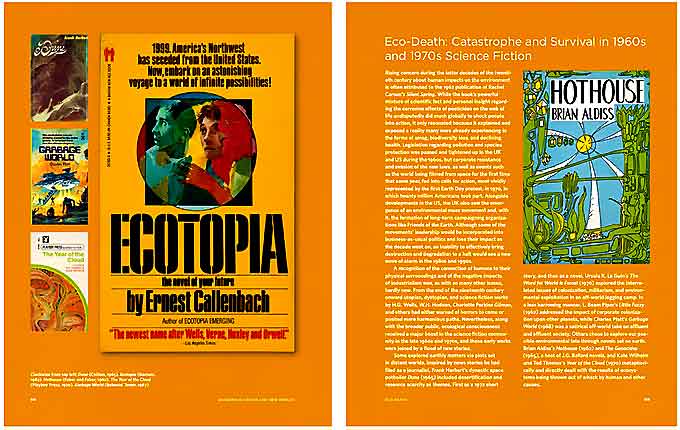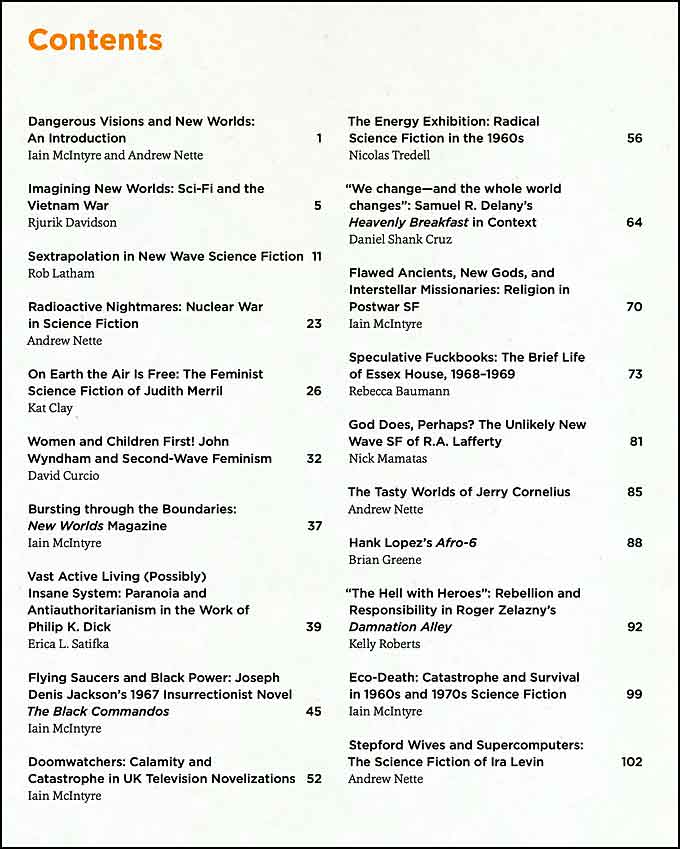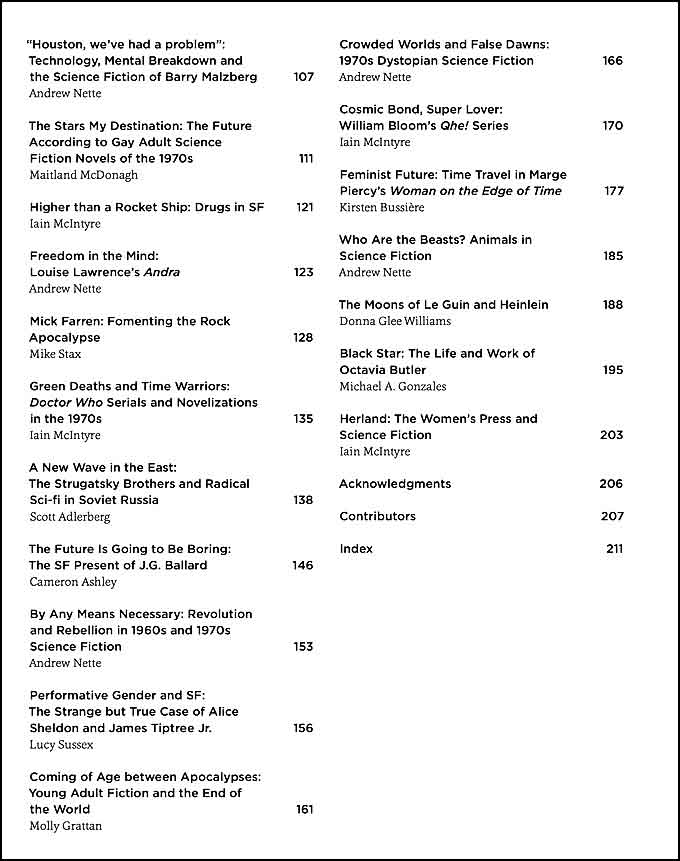Edited By ANDREW NETTE, IAIN McINTYRE (PM Press; 2021)
If you’re a fan of literary science fiction this book is absolutely essential reading. DANGEROUS VISIONS AND NEW WORLDS is a collection of laudably non-academic, reader-friendly essays edited by Andrew Nette and Iain McIntyre, illustrated with profuse photos and cover scans (never mind that, in the e-book edition, those covers are often incorrectly identified).
If you’re a fan of literary science fiction this book is absolutely essential reading.
It follows McIntyre and Nette’s similarly formatted volumes GIRL GANGS, BIKER BOYS AND REAL COOL CATS: PULP FICTION AND YOUTH CULTURE (2017) and STICKING IT TO THE MAN: REVOLUTION AND COUNTERCULTURE IN POPULAR AND PULP FICTION (2019). In DANGEROUS VISIONS AND NEW WORLDS Nette and McIntyre turn their gaze to science fiction literature of the latter half of the Twentieth Century, when the UK’s New Worlds magazine and the Harlan Ellison edited anthology DANGEROUS VISIONS led the charge in a radical restructuring of what was up until then a fairly hidebound genre, dominated by the very conservative likes of John W. Campbell and Robert Heinlein.
The latter is directly referenced here in an essay by Donna Glee Williams, who contrasts Heinlein’s 1966 novel THE MOON IS A HARSH MISTRESS, a lunar-set hymn to rugged individualism, with Ursula K. Le Guin’s THE DISPOSSESSED (1974), which likewise takes place on the moon but imparts a more liberal-minded, collectivist stance. Given this book’s overall gist, you can probably guess which novel Williams prefers.
The book’s co-editor Iain McIntyre provides overviews of the reign of New Worlds magazine, ecological catastrophe novels, DR. WHO novelizations, the use of animals in science fiction (in which he leaves out Kenneth Cook’s PLAY LITTLE VICTIMS) and the London based Women’s Press. The other editor Andrew Nette, meanwhile, writes about the science fiction novels of Ira Levin (THE STEPFORD WIVES and THIS PERFECT DAY in particular) and Barry Malzberg, Louise Lawrence’s YA classic ANDRA and “Revolutionary” science fiction (such as Mack Reynolds’s COMMUNE 2000, Naomi Mitchison’s SOLUTION THREE and Norman Spinrad’s THE MEN IN THE JUNGLE).
The book’s co-editor Iain McIntyre provides overviews of the reign of New Worlds magazine…
I appreciated a piece on the late smut book outfit Essex House, with an emphasis on the female writers who labored for it, by Rebecca Baumann (who gets extra points for extensively referencing an article I wrote on the subject). Also deserving of praise is Kelly Roberts’ piece on Roger Zelazney’s DAMNATION ALLEY, which argues that the novel was a pivotal influence on much of the post-apocalyptic media that followed, and Maitland McDonagh’s essay on sci fi themed gay smut novels of the late 1960s and 70s, the existence of which I was completely unaware.
That’s not the case with the very familiar (to me) SF figures Philip K. Dick and J.G. Ballard, who get profiled here by, respectively, Cameron Ashley and Erica L. Satifka. Good work in both cases, but there already exists a plethora of information about those authors. So too Mick Farren, who’s written about here by Mike Stax, and Octavia Butler, who’s fawned over at some length by Michael A. Gonzales.
I appreciated a piece on the late smut book outfit Essex House, with an emphasis on the female writers who labored for it, by Rebecca Baumann (who gets extra points for extensively referencing an article I wrote on the subject).

Other essays include one by Lucy Sussex on author Alice Sheldon, a.k.a. “James Tiptree Jr.,” a piece on apocalyptic YA fiction (including the seminal Z FOR ZACHARIAH) by Molly Grattan, an overview of the pioneering feminist science fiction of Judith Merrill by Kat Clay, a lengthy review of Samuel Delaney’s nonfiction memoir HEAVENLY BREAKFAST by Daniel Shank Cruz, and a look at the 1969 insurrection fantasy AFRO-6 and its late author Hank Lopez by Brian Greene.
What’s missing from this otherwise admirably exhaustive compilation is coverage of non-English speaking authors like France’s Gerard Klein and Austria’s Herbert W. Franke, who in the 1960s and 70s shook things up in the science fiction-verse alongside the New Worlds crowd. There is, however, a good overview of the work of Russia’s Strugatsky brothers (of ROADSIDE PICNIC and THE SNAIL ON THE SLOPE) by Scott Adlerberg, so on the international front DANGEROUS VISIONS AND NEW WORLDS isn’t entirely lacking.



